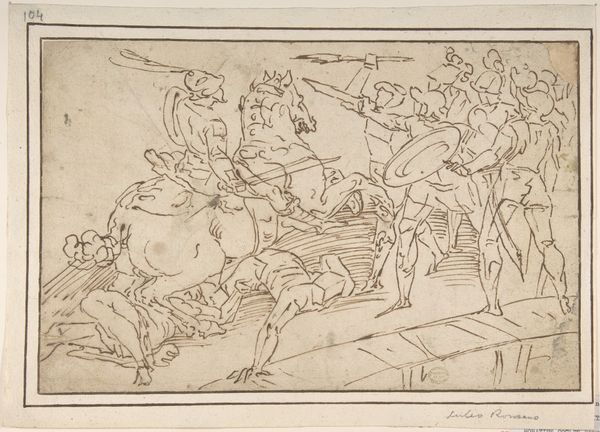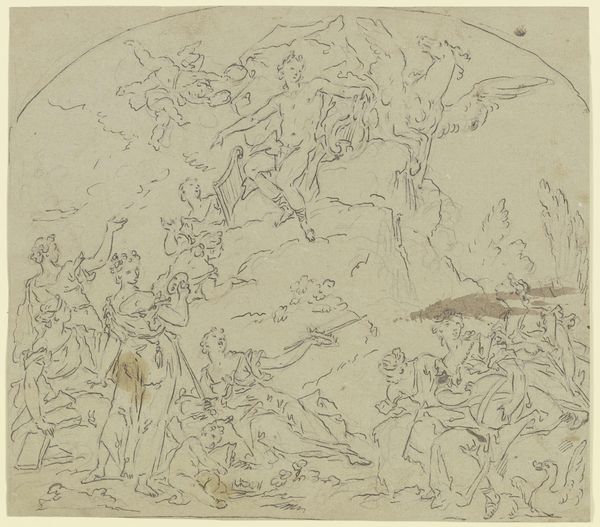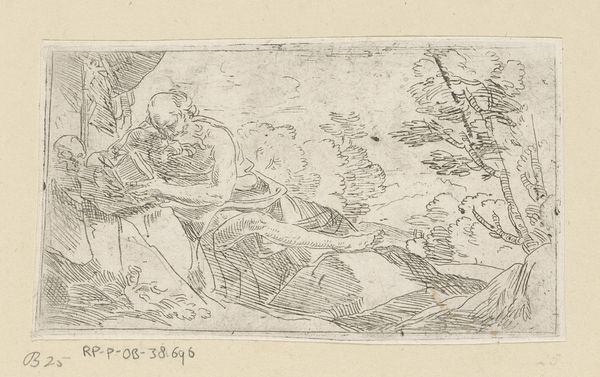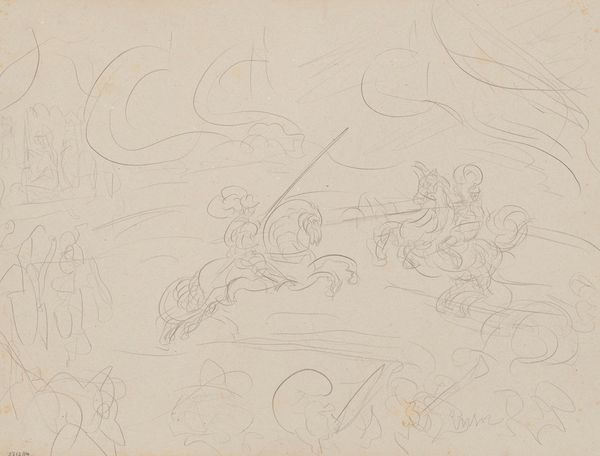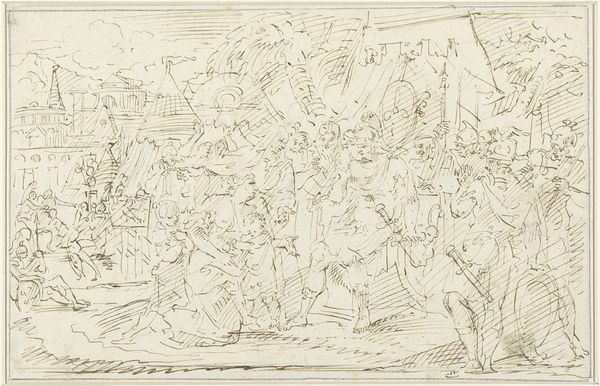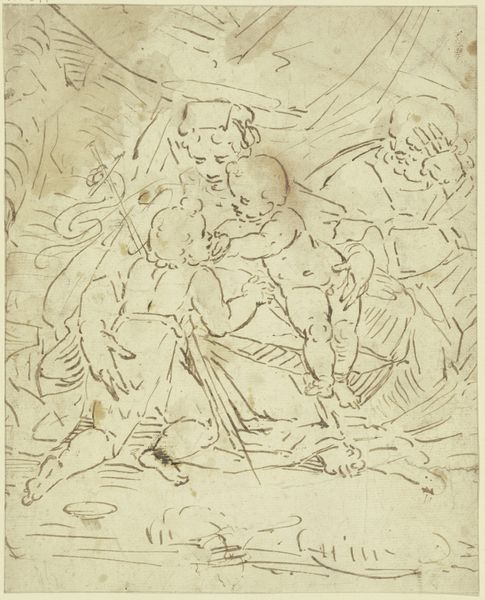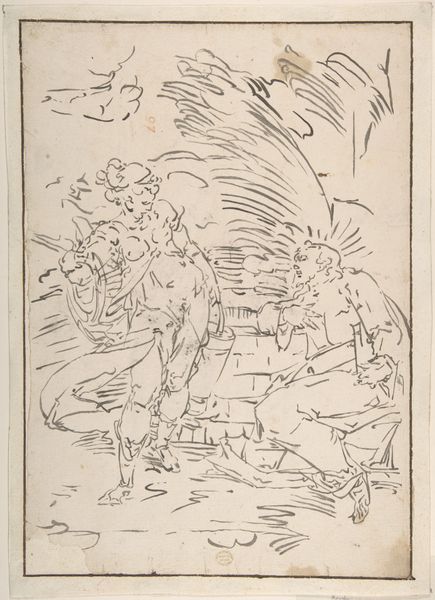
print, etching, ink
#
art-nouveau
# print
#
etching
#
caricature
#
ink
#
line
#
symbolism
Copyright: Public Domain: Artvee
Editor: So, this is James Ensor's "The Elephant's Joke," an etching made in 1888. It's a bewildering scene, almost nightmarish with all these figures crammed together. What's your interpretation? Curator: For me, Ensor’s grotesque imagery and seemingly chaotic compositions are a commentary on societal absurdities, power dynamics, and the inherent cruelty within social structures. Do you notice how the elephant, often a symbol of power, here is manipulated by a seemingly gleeful figure? Editor: Yes, it’s like the powerful are being made fun of, or even controlled like puppets. There's a kind of unruly mob scene happening below the elephant, too. Curator: Precisely! Ensor consistently challenged authority and bourgeois complacency, a period of rising societal complexity marked by colonialism and political unrest. Think of how his work speaks to anxieties surrounding those changes and critiques the dehumanizing effects of power. He uses symbolism as social critique. How do you think Ensor uses humour to push his message? Editor: I suppose the joke-like title belies a darker intention. Maybe it suggests that those in charge, those who pull the strings, are the real fools. It's quite provocative for its time, right? Curator: Absolutely. His bold use of caricature, particularly towards institutions and the ruling class, was radical. By rendering them ridiculous, he exposed the mechanisms of control and domination. Considering Foucault's ideas of power, the print critiques and resists the disciplinary power operating in the society he depicted. And consider the perspectives of queer studies scholars on visibility and spectacle. How might Ensor, through the grotesque and bizarre, be providing a way for marginalized voices to find representation and visibility? Editor: It’s fascinating to consider how a work from the late 19th century continues to speak to us about current political and social power struggles. Thanks, I learned so much. Curator: It's been an insightful exploration, reflecting on how historical and social contexts inform our interpretations.
Comments
No comments
Be the first to comment and join the conversation on the ultimate creative platform.
